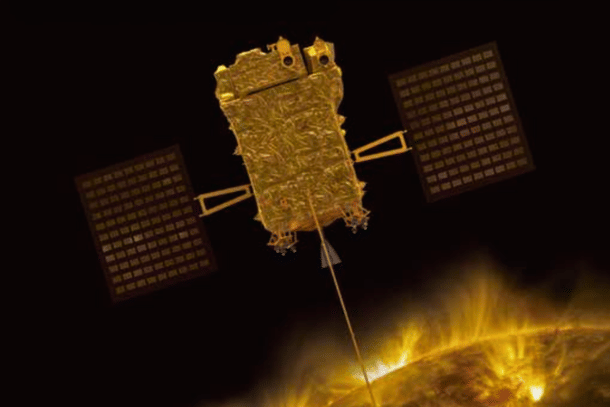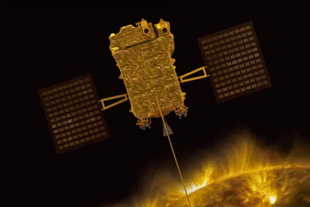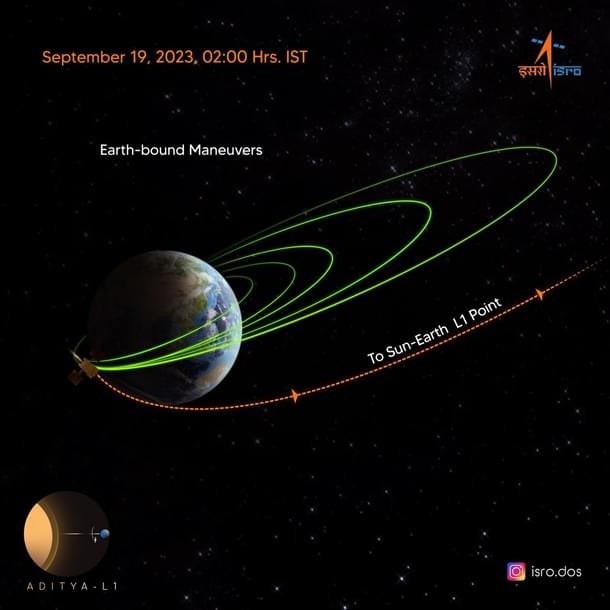Science
Aditya-L1 Now En Route To Sun-Earth L1 Point; ISRO Logs Feat With Latest 'Transfer' Move
Karan Kamble
Sep 19, 2023, 10:38 AM | Updated 10:38 AM IST
Save & read from anywhere!
Bookmark stories for easy access on any device or the Swarajya app.


In the early hours of Tuesday (19 September), the Indian Space Research Organisation (ISRO) sent India's first-ever solar probe sailing through space towards its destination — the Lagrange point 1 (L1).
Enabling this push out of Earth orbit was the trans-Lagrangean point 1 insertion (TL1I) manoeuvre, which caps off the five planned Earth-bound manoeuvres.
"The spacecraft is now on a trajectory that will take it to the Sun-Earth L1 point," ISRO said. After about 110 days, Aditya-L1 will be injected into an orbit around L1.
One of five such points for the Sun-Earth system, L1 is a spot in space where gravity from the Sun and Earth balance the orbital motion of a satellite.
A spacecraft at this point stays in a fixed position relative to the Sun and Earth. It’s a kind of a gravitational sweet spot. Here, it doesn't take a lot of energy (fuel) to keep a spacecraft there. (More about L1 here)
The Indian space agency said that with this latest manoeuvre it had successfully transferred an object on a trajectory towards another celestial body or location in space five times in a row.
The other four instances comprise the three Chandrayaan Moon missions and the one Mangalyaan Mars mission.

Meanwhile, Aditya-L1 already initiated science operations in Earth orbit. ISRO provided a first look at the scientific data on Monday (18 September).
Read: Aditya-L1: First Science Is In — This Data Will Help Uncover Particle Behaviour Surrounding Earth
Karan Kamble writes on science and technology. He occasionally wears the hat of a video anchor for Swarajya's online video programmes.





